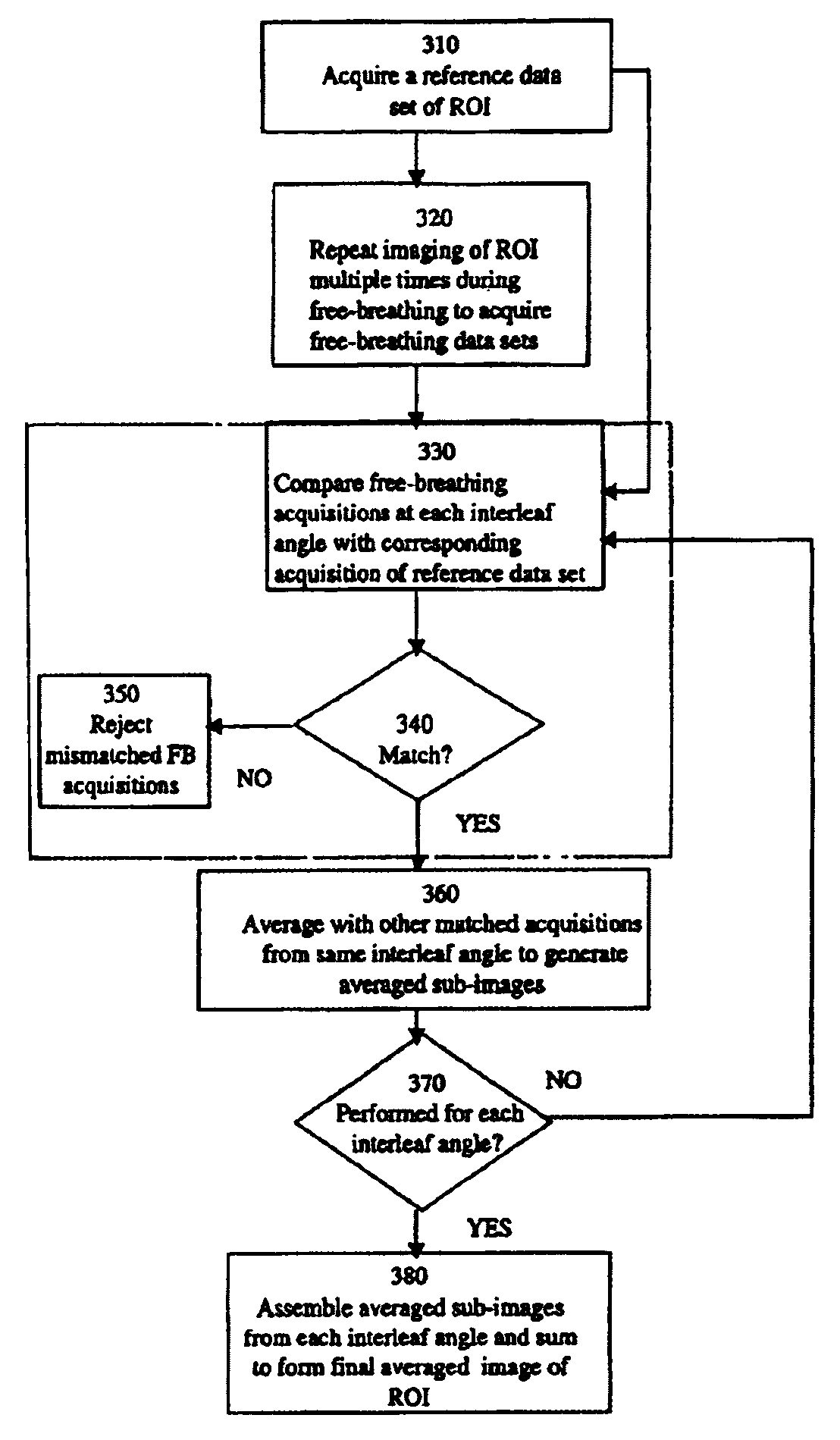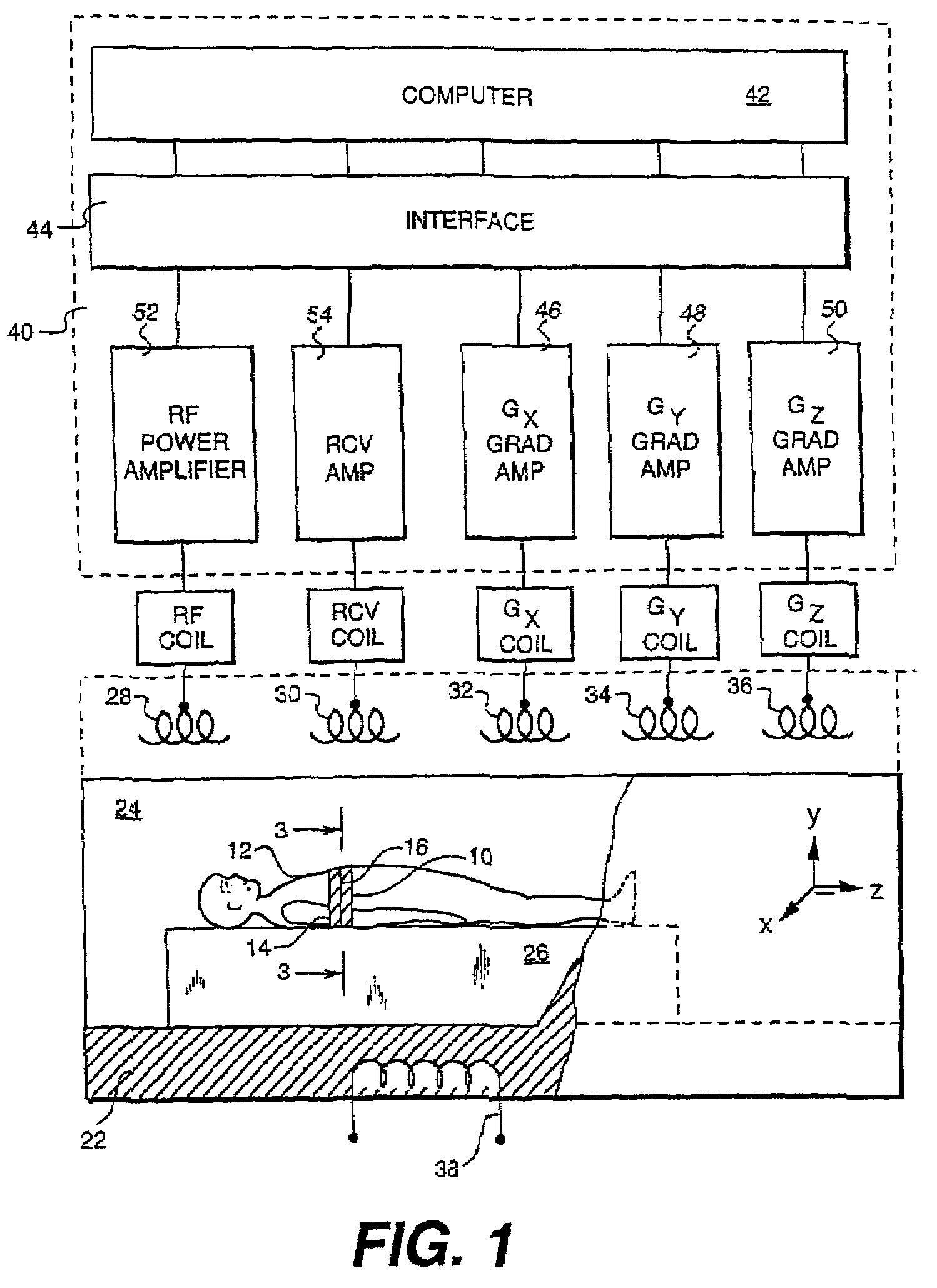Robust coronary MR angiography without respiratory navigation
a coronary artery and respiratory navigation technology, applied in the field of medical imaging methods, can solve the problems of misregistration artifacts, inability to hold up again, and lack of robust method that works
- Summary
- Abstract
- Description
- Claims
- Application Information
AI Technical Summary
Problems solved by technology
Method used
Image
Examples
Embodiment Construction
[0011]FIG. 1 shows principal components of a MR imaging system 20, useful for practicing respective embodiments of the invention described hereinafter. System 20 includes a main magnet 22 provided with a bore 24, the MR subject 12 positioned therein on a support 26 for MR imaging of the patient structure 14. MR system 20 further includes a radio frequency (RF) excitation coil 28, a receive coil 30, Gx, Gy and Gz gradient coils 32, 34, and 36, respectively, and a static main magnet coil 38. All of the coils 28 and 32–38 are incorporated into magnet 22 so that when energized, they project respective magnetic fields into bore 24, and more specifically into region 10 of the subject 12. Receive coil 30 is likewise incorporated into magnet 22, to acquire MR data points or samples.
[0012]Referring further to FIG. 1, there is shown MR system 20 further comprising system electronics 40, which include a computer 42 interactively coupled to an interface 44. Components of MR systems 20 further i...
PUM
 Login to View More
Login to View More Abstract
Description
Claims
Application Information
 Login to View More
Login to View More - R&D
- Intellectual Property
- Life Sciences
- Materials
- Tech Scout
- Unparalleled Data Quality
- Higher Quality Content
- 60% Fewer Hallucinations
Browse by: Latest US Patents, China's latest patents, Technical Efficacy Thesaurus, Application Domain, Technology Topic, Popular Technical Reports.
© 2025 PatSnap. All rights reserved.Legal|Privacy policy|Modern Slavery Act Transparency Statement|Sitemap|About US| Contact US: help@patsnap.com



